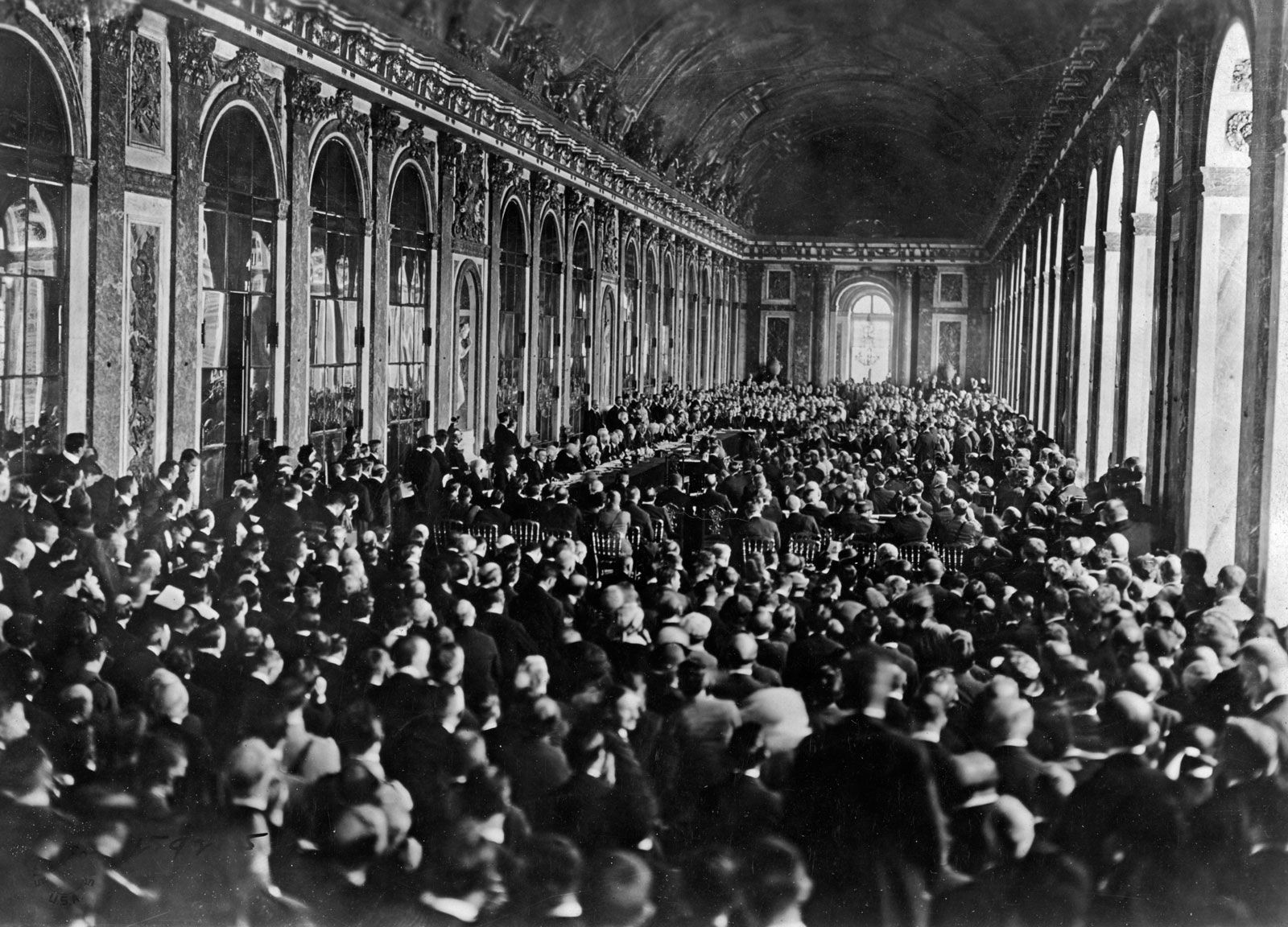In October 1918, as World War I neared its end, the German government, seeking an armistice, turned to U.S. President Woodrow Wilson. Germany declared its acceptance of Wilson’s Fourteen Points, presented to the U.S. Congress in January 1918, as the foundation for a just and lasting peace. However, the Allied powers, while considering the Fourteen Points, also demanded compensation from Germany for the damages inflicted on their civilian populations and properties. The complexities of territorial adjustments were further compounded by secret treaties between England, France, and Italy, made with Greece, Romania, and each other during the war years.
 Delegates at the Treaty of Versailles signing
Delegates at the Treaty of Versailles signing
The Paris Peace Conference and the “Big Four”
The Treaty of Versailles was the product of the Paris Peace Conference in the spring of 1919, a period coinciding with the devastating influenza pandemic of 1918–19. The conference was largely controlled by the “Big Four”: David Lloyd George, the prime minister of the United Kingdom; Georges Clemenceau, the prime minister of France; Woodrow Wilson, the president of the United States; and Vittorio Orlando, the prime minister of Italy. The most critical decisions were effectively made by the first three. None of the defeated nations, including Germany, were given a meaningful role in shaping the treaty. Even smaller Allied powers had limited influence.
The German delegation faced a fait accompli. The terms of the treaty were presented to them without negotiation. They expressed shock at the severity of the conditions, particularly the stark contrast between the pre-armistice assurances and the treaty’s final form. The “war guilt” clause, which attributed the responsibility for the war to Germany, and the extensive reparations demanded, were particularly objectionable to the German representatives.
Territorial Losses and Mandates
The Treaty of Versailles led to a significant reduction in Germany’s territory and population, estimated at around 10 percent.
-
Western Front: Alsace and Lorraine were returned to France, addressing a long-standing historical grievance. The Saarland, a region rich in coal, was placed under the administration of the League of Nations until 1935, with a plebiscite planned to determine its future.
-
Northern Europe: Three small territories were ceded to Belgium. Following a plebiscite, Northern Schleswig was returned to Denmark, reflecting the will of its inhabitants.
-
Eastern Front: Poland was re-established as an independent nation, incorporating formerly German territories in West Prussia and Poznań (Posen). Poland was also granted a “corridor” to the Baltic Sea, providing access to maritime trade but separating East Prussia from the rest of Germany. Part of Upper Silesia was also awarded to Poland after a plebiscite. Gdańsk (Danzig) was designated a free city, serving as a point of contention between Germany and Poland.
-
Colonies: All of Germany’s overseas colonies, located in China, the Pacific, and Africa, were seized and redistributed among the Allied powers, including Britain, France, Japan, and others, under the mandate system of the League of Nations. This effectively stripped Germany of its imperial possessions.
The Legacy of Versailles
The Treaty of Versailles aimed to establish a lasting peace after the devastation of World War I. However, its harsh terms, particularly the war guilt clause and the heavy reparations burden, fostered resentment and instability in Germany. Many historians argue that these factors contributed to the rise of extremism and, ultimately, the outbreak of World War II. The treaty remains a subject of debate and analysis, serving as a cautionary tale about the complexities of peacemaking and the long-term consequences of punitive measures.